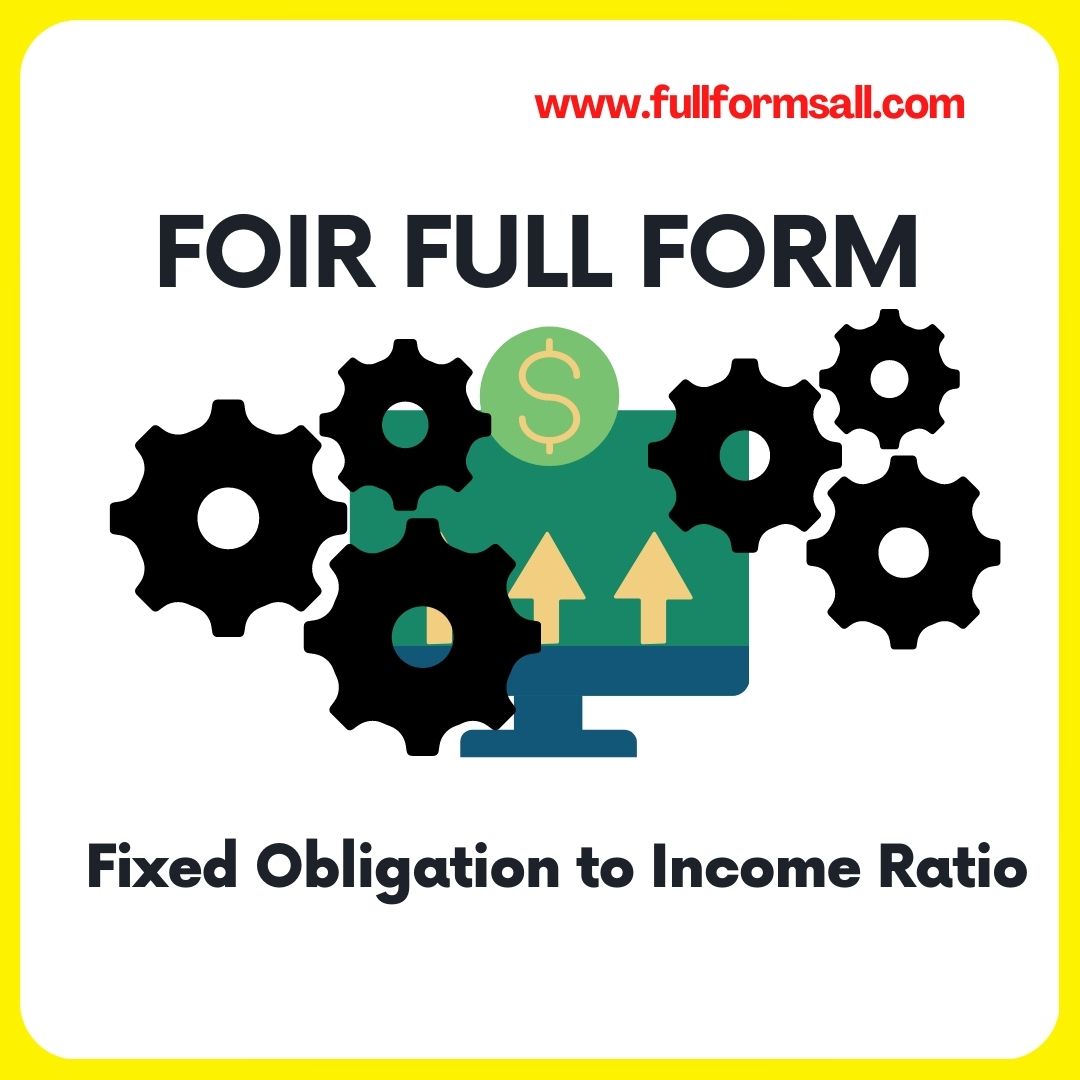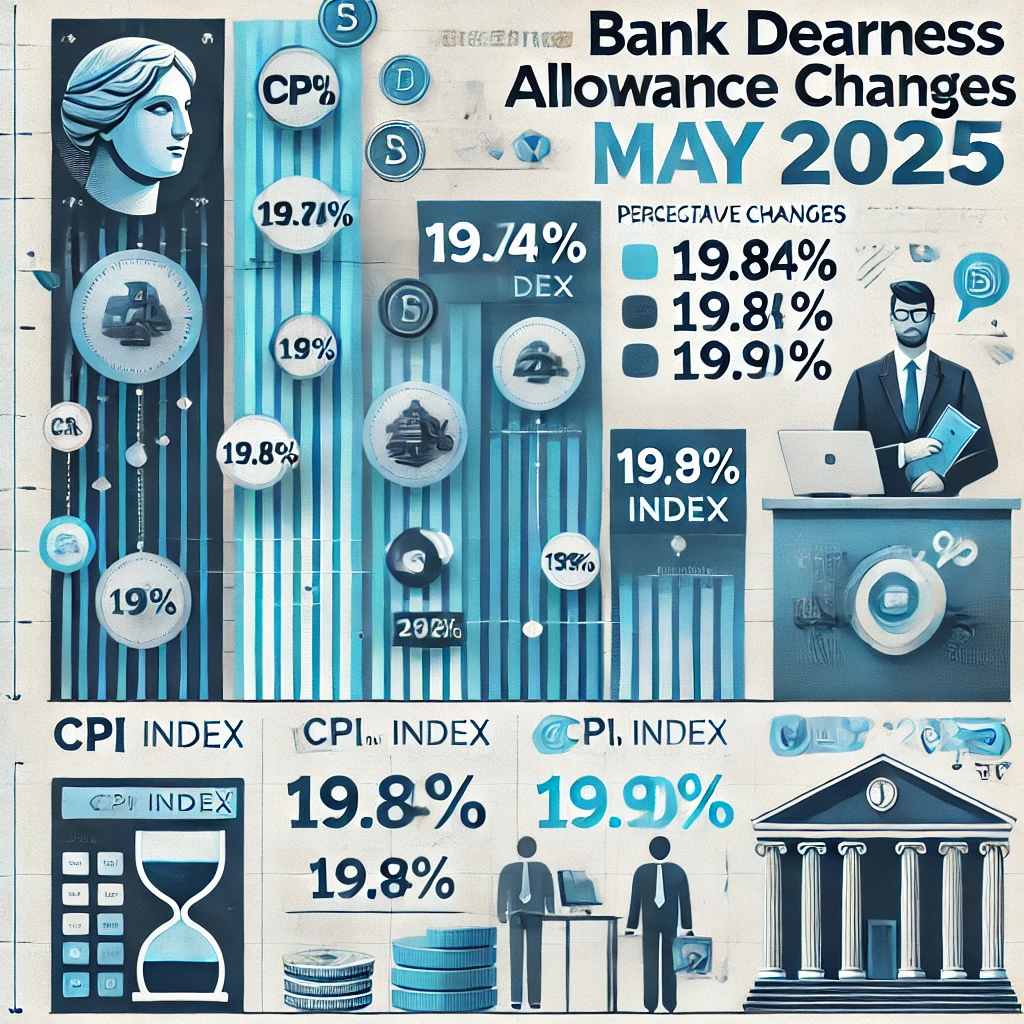In this article you get to know about FOIR full from and other different abbreviations of FOIR in various fields. FOIR full form refers to Fixed Obligation to Income Ratio.

Fixed Obligation to Income Ratio is a financial term used to describe the proportion of an individual’s fixed obligations, such as loan or debt repayments, compared to their monthly income. It is a measure used by banks and financial institutions to determine the borrower’s ability to repay a loan. FOIR is calculated by dividing the borrower’s fixed monthly obligations (EMIs, credit card payments, etc.) by their monthly income. For example, if a borrower has a monthly income of $10,000 and fixed monthly obligations of $3,000, their FOIR would be 0.3 or 30%.
Lenders typically set a maximum FOIR limit for borrowers, which may vary depending on the type of loan and the lender’s policy. A lower FOIR indicates a lower risk for the lender and increases the chances of loan approval. It is essential to maintain a healthy FOIR to ensure that loan repayments do not become a burden on one’s monthly budget. A FOIR of 40% or lower is considered healthy, while anything above 50% is viewed as risky by lenders. FOIR is an important factor that lenders consider when evaluating a borrower’s creditworthiness. In addition to credit scores and income levels, FOIR provides lenders with a clear picture of a borrower’s financial obligations and their ability to handle additional debt. FOIR is typically used in the underwriting process for personal loans, home loans, car loans, and other types of credit. Lenders may also consider the borrower’s credit history, employment status, and other factors when evaluating their creditworthiness. Borrowers can improve their FOIR by paying down existing debts, avoiding new debt, and increasing their income. Lenders may also allow borrowers to increase their FOIR limit if they have a strong credit history and stable income. It is important for borrowers to keep their FOIR in mind when taking on new debt. Borrowers should make sure that their monthly loan payments fit comfortably within their budget, and they should avoid taking on more debt than they can handle. Maintaining a healthy FOIR can help borrowers avoid financial stress and improve their chances of getting approved for future loans.
In addition to being an important factor in loan approval, FOIR is also useful for borrowers to assess their own financial situation. Calculating their FOIR can help them understand how much of their income is already allocated to fixed obligations and how much they have left for other expenses. This can be particularly helpful when making decisions about taking on additional debt, such as applying for a new credit card or buying a car. For lenders, FOIR is a key metric for risk management. By setting a maximum FOIR limit, lenders can limit the amount of risk they take on when lending money. A borrower with a high FOIR is considered a higher risk, as they have less disposable income available to make loan payments. Lenders may also use FOIR as a way to compare borrowers and determine who is the most creditworthy.
Calculating FOIR for a Personal Loan involves two steps: first, calculating the borrower’s fixed obligations, and second, dividing the fixed obligations by their monthly income. Here’s how to do it:
Step 1: Calculate Fixed Obligations
Fixed obligations are the monthly payments that the borrower is obligated to pay. These include all debt obligations such as EMIs on existing loans, credit card payments, rent, and any other fixed monthly expenses. Variable expenses like groceries, utility bills, and discretionary expenses are not included.
For example, suppose a borrower has the following fixed obligations:
EMI on an existing car loan = $15,000 per month
EMI on an existing personal loan = $10,000 per month
Credit card payments = $5,000 per month
Rent = $20,000 per month
The total fixed obligations for this borrower would be $50,000 per month.
Step 2: Divide Fixed Obligations by Monthly Income
The next step is to divide the fixed obligations by the borrower’s monthly income. The income considered for this calculation is the net income or take-home salary, which is the salary after all deductions such as taxes, provident fund, and other contributions.
For example, if the borrower has a monthly net income of $1,50,000, then the FOIR would be calculated as:
FOIR = (Total Fixed Obligations / Monthly Income) x 100
FOIR = ($50,000 / $1,50,000) x 100
FOIR = 33.33%
So, in this example, the FOIR for the borrower is 33.33%. It indicates that the borrower’s fixed obligations account for 33.33% of their monthly income, which is considered a healthy FOIR for a Personal Loan.
Overall, FOIR is an important financial metric for both borrowers and lenders. By understanding and managing their FOIR, borrowers can improve their financial stability and increase their chances of getting approved for loans. For lenders, FOIR is a valuable tool for evaluating credit risk and making informed lending decisions.
Different abbreviations of FOIR in various fields are as follows
| Term | Abbreviation | Category |
| FOIR | First off Inspection Report | Business |
| FOIR | Florida Office of Insurance Regulation | Business |
CONCLUSION:
Dear reader in this article you get to know about FOIR full from and FOIR term used in various other fields, If you have any query regarding this article kindly comment below.


